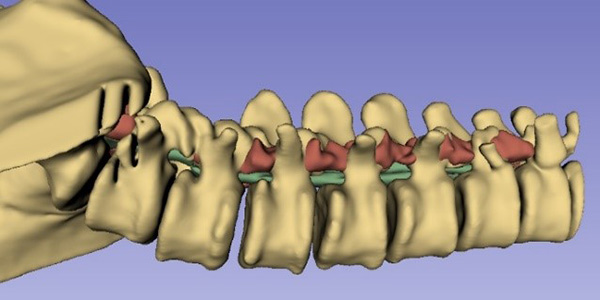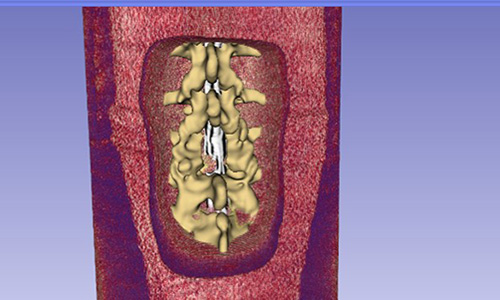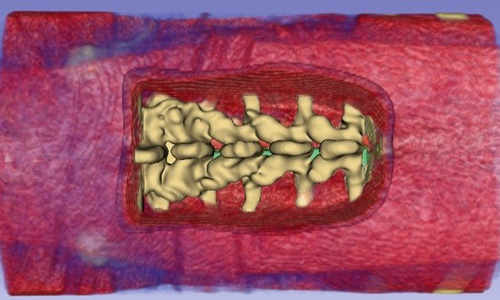Spine surgery simulation
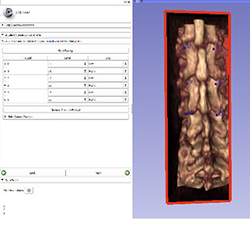
As residency programs move to competency-based curricula, more authentic and accessible teaching tools are required to train the next generation of orthopaedic and neurosurgeons. Given the potential for neural complications, there exist significant barriers to residents and fellows obtaining adequate experience performing spinal surgery in the operating room. Virtual simulation tools are lacking for spinal surgery. The aim of this work is to develop an open-source 3D virtual simulator as a teaching tool to improve training in spinal decompression and pedicle screw insertion.
A custom stepwise simulator workflow was built using 3D Slicer; an open-source software development platform for medical image visualization and processing.
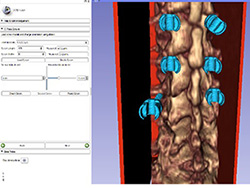
The procedural steps include import of patient-specific imaging, fusion of CT and MRI data, bone threshold-based segmentation, soft tissue segmentation, vertebral level identification, surgical planning, surgical field simulation, laminectomy, pedicle screw placement (start point, screw size, and trajectory), spinal decompression simulation, and evaluation. Bone and soft tissue resecting tools were developed by customizing manual 3D segmentation tools. Laminectomy simulation was enabled through bone and ligamentum flavum resection at the site of compression.
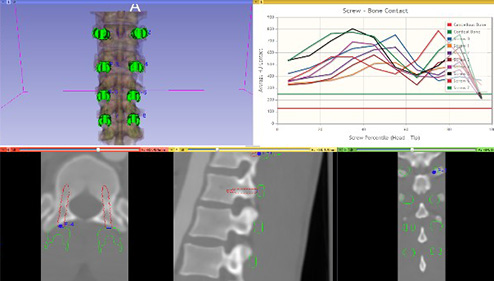
The completed workflow allows patient specific simulation and visualization of spinal procedures. Procedural accuracy, the design of resecting tools, and modeling of the impact of bone and ligament removal adequately encompass important challenges in spinal surgery. Screw-bone contact area can be evaluated quantitatively. Visualization of contact, decompression, tissue resection and positioning can be evaluated.
This software development project has resulted in a well-characterized open source tool for simulating spinal surgery. Future work will integrate the simulator within existing orthopaedic resident competency-based curriculum and fellowship training instruction.
